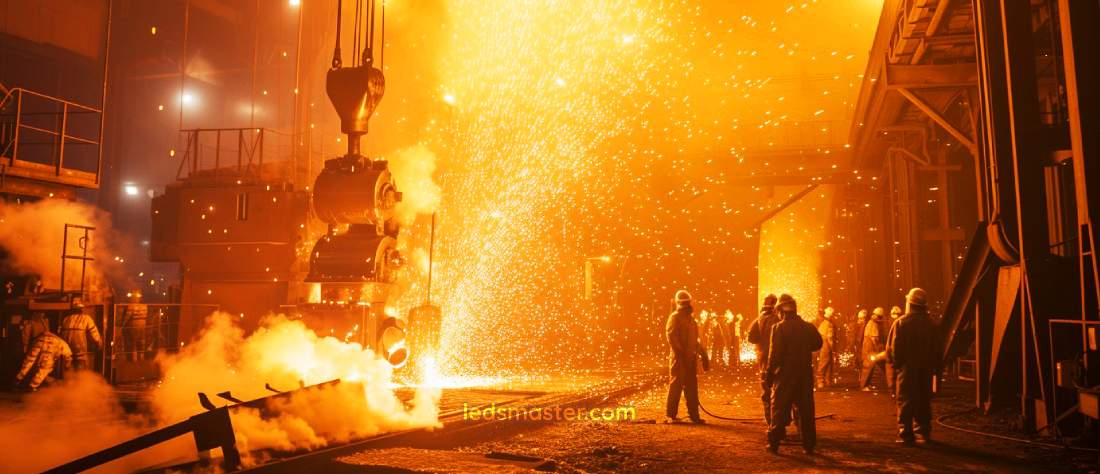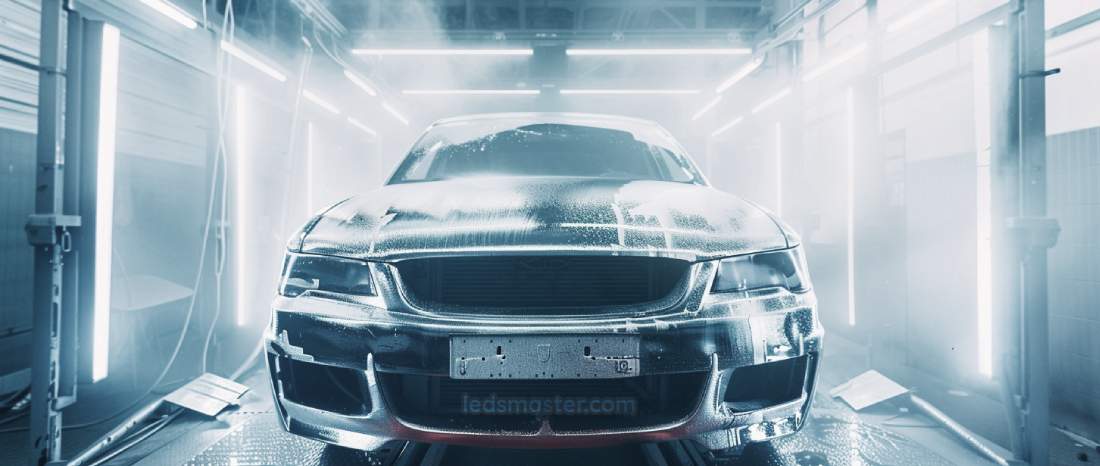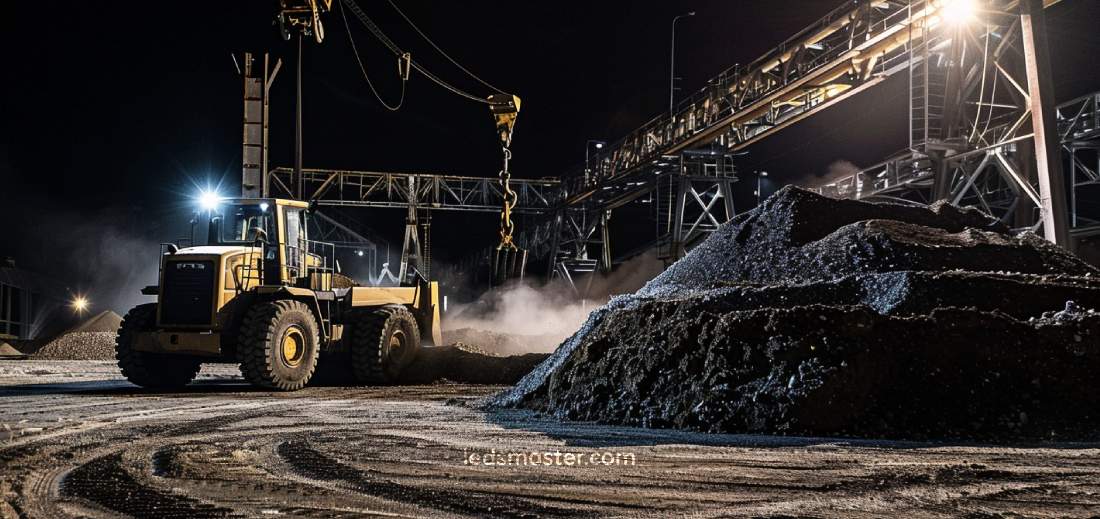Whether you’re illuminating a warehouse, construction site, gas station, or container port, we provide the expert insights and products you need to light up your space efficiently and effectively.
This is a one-stop resource for understanding the diverse range of industrial lighting options available today. Each type of light we offer is engineered to meet the specific needs of different environments, ensuring optimal performance and safety. Explore our detailed sections to discover the special features of lights tailored for various venues. From robust and resilient options for construction sites to energy-efficient solutions for warehouses and specialized fixtures for gas stations, we cover it all.
Need assistance selecting the right lighting? Take advantage of our free lighting consultation service. Our experts are here to help you choose the perfect lighting solution that aligns with your requirements, enhancing both functionality and aesthetics.
Get your complimentary lighting design today
Selecting the appropriate lighting requires understanding the unique needs of each environment and the features that make lighting fixtures suitable for harsh conditions. This article explores the key aspects of industrial lighting, highlighting the must-have features and other considerations for various industrial applications.
Table of Contents
ToggleChallenging conditions in industrial environments necessitate robust lighting solutions. Effective industrial lighting must accommodate diverse factors such as high ceilings, large spaces, extreme temperatures, moisture, dust, and mechanical impact. The right lighting not only enhances visibility and safety but also contributes to operational efficiency and worker well-being.
Warehouses require consistent and bright illumination to ensure clear visibility across large storage areas. Construction sites need lighting that can withstand exposure to the elements and provide adequate light for both daytime and nighttime operations. Gas stations benefit from well-lit environments to enhance safety and visibility for customers, while container ports need durable lighting that can handle the demanding maritime environment.
Industrial environments often present extreme temperature conditions due to both the nature of the work and the surrounding environment. Such settings demand lighting fixtures that are resilient to high temperatures to ensure continuous operation and longevity. Unlike conventional lights, which can suffer from reduced performance or failure under intense heat, heat-resistant lighting fixtures are engineered to thrive in challenging thermal conditions.
Heat-resistant lighting is essential for various reasons. In manufacturing plants, processes can generate significant heat, creating an environment where standard lighting may deteriorate rapidly. The intense heat from furnaces, kilns, or machinery can raise ambient temperatures to levels where conventional lights fail to function effectively. This problem is not confined to indoor settings. Outdoor industrial environments, such as oil rigs or construction sites in hot climates, also experience high temperatures due to prolonged exposure to direct sunlight and environmental conditions. In these scenarios, heat-resistant lighting ensures that operations are not compromised by the ambient heat.

These specialized lighting fixtures are crafted from materials that can withstand high temperatures without degrading. The choice of materials and design features is critical; often, they include advanced heat-dissipating mechanisms to manage the temperature more effectively. For instance, heat sinks or cooling fins are integrated into the design to help dissipate heat away from sensitive components. This innovation is crucial because it prevents the accumulation of heat within the fixture, which could otherwise lead to component failure or reduced light output over time.
The construction of heat-resistant lights often involves materials like high-temperature plastics or metals that do not warp or lose integrity under heat stress. Additionally, these fixtures may incorporate specialized coatings or protective barriers that reflect or disperse heat, further enhancing their durability. This robust construction ensures that the lights maintain consistent performance even when subjected to prolonged exposure to high temperatures.
High-temperature-resistant lighting fixtures are meticulously tested to ensure they can handle temperature extremes without sacrificing functionality. These lights must operate efficiently in environments where temperatures can soar, maintaining their light output and structural integrity. By dissipating heat effectively, they protect electronic components, such as drivers and LED chips, from thermal damage, thereby extending the lifespan of the entire lighting system.
Moreover, the reliability of heat-resistant lighting contributes significantly to operational efficiency and safety in industrial settings. In a manufacturing plant, for example, stable lighting ensures that workers can perform their tasks accurately and safely, even in high-temperature areas. In outdoor applications, such as oil fields or mining operations, dependable lighting is crucial for maintaining visibility and safety during operations, regardless of the environmental heat.
Industrial lighting fixtures frequently encounter moisture, dust, and various contaminants, which can compromise their performance and longevity. These elements pose significant risks, including short circuits, corrosion, and reduced light output, making it crucial for industrial lighting to be equipped with robust waterproof and dustproof features. The use of lights with specific Ingress Protection (IP) ratings is essential for ensuring that lighting systems can withstand these harsh conditions and continue to operate reliably.
Waterproof and dustproof features are critical in maintaining the functionality and safety of lighting fixtures in challenging industrial settings. These features protect the internal components of the lighting from the intrusion of water, dust, and other particulates. This protection is particularly important in environments such as manufacturing plants, construction sites, or outdoor installations where the presence of moisture and dust is inevitable.

Lighting fixtures with Ingress Protection (IP) ratings are specifically designed to resist the ingress of foreign particles and water. These ratings provide a standardized measure of the degree of protection offered by the enclosure of the fixture against these elements. An IP rating typically consists of two digits: the first digit indicates the level of protection against solid particles, such as dust, while the second digit indicates the level of protection against liquids.
For instance, IP66-rated lighting fixtures offer a high level of protection suitable for demanding industrial environments. The “6” in the first position signifies that the fixture is dust-tight, meaning it provides complete protection against the ingress of dust. This level of protection ensures that no dust particles can enter the enclosure, safeguarding the internal components and maintaining optimal performance even in dusty conditions.
The “6” in the second position indicates that the fixture is protected against powerful water jets from any direction. This means that IP66-rated lights can withstand exposure to heavy rain, washdowns, and powerful water jets, making them ideal for both outdoor areas and indoor environments where water exposure is a concern. For example, in food processing plants, regular washdowns are necessary to maintain hygiene standards. IP66-rated lighting ensures that the fixtures can endure the cleaning processes without risk of water ingress that could lead to electrical failures or corrosion.
Beyond just providing protection, IP66-rated lights also offer durability and reliability, ensuring that lighting systems remain operational even under adverse conditions. This is particularly important in industries such as mining or agriculture, where equipment is regularly exposed to harsh weather and environmental conditions. The ability of IP66-rated fixtures to resist water ingress and dust infiltration enhances their longevity and reduces the need for frequent maintenance or replacements.
The construction of these fixtures typically involves rugged materials and advanced sealing techniques. Enclosures are designed to be hermetically sealed, using gaskets or O-rings that create a tight barrier against dust and water. Additionally, the design often includes features such as weatherproof housings and protective coatings that further enhance the fixture’s ability to withstand environmental stress.
IP66-rated lighting fixtures are versatile and can be used in various applications beyond just industrial settings. For example, in transportation hubs like train stations or airports, these lights provide reliable illumination despite exposure to outdoor elements or frequent cleaning operations. In marine environments, such as shipyards or docks, IP66-rated fixtures are essential to prevent corrosion and ensure continued performance amidst saltwater exposure.

The presence of heavy machinery, frequent physical impacts, and continuous movement in industrial environments poses significant challenges to the integrity and performance of lighting fixtures. Lighting systems in such environments must be designed to withstand these conditions, making shockproof and vibration-resistant features indispensable. These features ensure that lighting remains operational and reliable despite the physical stresses commonly encountered in industrial operations, thus contributing to overall safety and efficiency.
Shockproof lighting is crucial in environments where lighting fixtures are exposed to mechanical impacts. In facilities such as manufacturing plants, automotive workshops, or construction sites, lights can be subject to accidental knocks, drops, or collisions with moving equipment. Shockproof fixtures are engineered to absorb and dissipate the energy from such impacts, protecting the internal components and maintaining their functionality.
The construction of shock-resistant lights involves several key elements. First, the housings of these fixtures are often reinforced with materials such as heavy-duty plastics, metals, or composite materials that can withstand impacts without cracking or breaking. This robust construction ensures that the fixture itself does not become a safety hazard by shattering or exposing electrical components upon impact.
Additionally, shockproof lighting incorporates impact-absorbing mounts and gaskets that cushion the fixture against mechanical shocks. These mounts are designed to absorb the force of impacts, preventing the transmission of energy to the sensitive internal components such as LED drivers, circuit boards, or wiring. By isolating these components from the shock, the fixture can continue to operate normally even after experiencing physical impacts.
In environments where heavy machinery or equipment is in constant motion, vibration-resistant lighting is equally critical. For instance, in mining operations, industrial manufacturing plants, or facilities with large conveyor systems, lights are often mounted on or near machinery that generates significant vibrations. Without appropriate design considerations, these vibrations can cause fixtures to loosen, connections to fail, or components to fatigue over time, leading to frequent maintenance issues or complete fixture failure.
Vibration-resistant lights are specifically designed to handle the continuous movement and vibrations that are common in such settings. These lights typically feature anti-vibration mounts, such as rubber isolators or spring mounts, that dampen the vibrations and prevent them from affecting the internal electronics. This vibration damping is essential for maintaining the stability and alignment of the fixture, ensuring that it provides consistent illumination without flickering or interruptions.
Moreover, the internal components of vibration-resistant fixtures are often secured using techniques that minimize movement and wear. For example, PCB (Printed Circuit Board) designs may include flexible connectors or shock-absorbing mounts that allow for slight movements without stressing the connections. Additionally, wires and cables within the fixture are often routed and secured to prevent them from chafing or breaking due to constant movement.
In industrial applications where lighting fixtures are mounted on moving vehicles, cranes, or mobile equipment, the need for shockproof and vibration-resistant features becomes even more pronounced. These fixtures must not only withstand the operational vibrations but also endure the additional stresses from vehicle movement and impacts with obstacles or terrain.
Shockproof and vibration-resistant lighting is also essential for ensuring safety and reliability in critical operations. For example, in chemical plants or oil refineries, where precise and continuous illumination is crucial for monitoring processes, the failure of a light due to mechanical impact or vibrations could have serious safety implications. Similarly, in transportation hubs or airports, where lights may be subject to frequent vibrations from passing vehicles or aircraft, maintaining the integrity of the lighting system is vital for ensuring visibility and safety.
Furthermore, these features contribute to the overall maintenance efficiency and cost-effectiveness of the lighting systems. By reducing the frequency of failures and the need for replacements due to mechanical stress, shockproof and vibration-resistant fixtures lower the total cost of ownership and reduce downtime in industrial operations.
Certain industrial environments, such as chemical plants or oil refineries, have a high risk of explosive atmospheres due to the presence of flammable gases or dust. In these settings, explosion-proof lighting is essential. These fixtures are designed to contain sparks or heat generated within the light, preventing ignition of surrounding hazardous substances.
Explosion-proof lights are constructed with heavy-duty materials and sealed to prevent the entry of flammable elements. They are rigorously tested to meet strict safety standards, ensuring reliable operation in potentially explosive environments.
Industrial facilities with high ceilings, such as warehouses and factories, often use high-bay lighting to illuminate large areas from a considerable height. High-bay lights are designed to provide broad, even illumination and are typically mounted at heights of 20 feet or more. They are available in various types, including LED and metal halide, each offering different benefits in terms of energy efficiency and light quality.
Conversely, low-bay lighting is used in areas with lower ceilings, usually below 20 feet. These fixtures are designed to provide adequate illumination in spaces like small warehouses or assembly lines where high-bay lights would be excessive. Low-bay lights offer concentrated illumination suitable for closer applications, ensuring clarity and visibility at lower heights.
With growing emphasis on sustainability, energy-efficient lighting solutions are increasingly preferred in industrial applications. LED lighting has emerged as a leading choice due to its energy efficiency, long lifespan, and minimal maintenance requirements. LEDs consume significantly less power than traditional incandescent or fluorescent lights, reducing energy costs and environmental impact.
LED industrial lights offer the advantage of directional light distribution, reducing light wastage and enhancing illumination where needed most. They also produce less heat, contributing to a safer working environment and reducing cooling costs.
The integration of smart technology in industrial lighting is transforming how facilities manage their lighting systems. Smart lighting solutions offer automated controls, allowing for adjustments based on occupancy, daylight availability, or specific operational needs. These systems can be managed remotely, providing real-time data on energy consumption and lighting performance.
Smart lighting enhances efficiency by ensuring lights are used only when needed, reducing energy waste and operational costs. Features like motion sensors, dimming capabilities, and scheduling further optimize lighting usage, contributing to a more sustainable and cost-effective industrial environment.
Selecting the right industrial lighting involves more than choosing fixtures; it requires a comprehensive understanding of the specific needs and challenges of each application. Customization options, such as adjustable mounting solutions, specialized lenses, and tailored lighting designs, allow for precise alignment with operational requirements.
Our free lighting consultation service offers expert guidance in identifying the most suitable lighting solutions for your facility. Our team works closely with you to assess your environment, understand your lighting needs, and recommend fixtures that enhance safety, efficiency, and aesthetics. This personalized approach ensures that you receive lighting solutions that are not only functional but also optimized for your specific industrial setting.
Industrial lighting is a critical component of modern industrial operations, affecting safety, productivity, and efficiency. From heat resistance and waterproofing to energy efficiency and smart technology, the right lighting solutions are designed to meet the unique demands of industrial environments. By understanding these features and utilizing expert consultation services, you can ensure that your industrial space is well-lit, safe, and conducive to optimal performance.